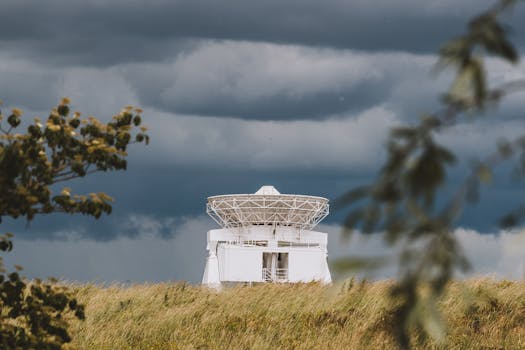
GEO Satellites: Unlocking the Power of Geostationary Orbit
GEO satellites, or Geostationary satellites, are a type of satellite that orbits the Earth at an altitude of approximately 36,000 kilometers, above the equator. At this height, the satellite’s orbital period matches the Earth’s rotational period, allowing it to remain stationary in the sky, relative to a fixed point on the Earth’s surface. This unique characteristic makes GEO satellites ideal for a variety of applications, including television broadcasting, telecommunications, and weather forecasting.
GEO satellites have been in use for decades, with the first geostationary satellite, Syncom 2, launched in 1963. Since then, the technology has advanced significantly, with modern GEO satellites capable of carrying large payloads, including high-gain antennas, transponders, and propulsion systems. These satellites are typically launched into geostationary transfer orbit (GTO) using a launch vehicle, and then use their onboard propulsion system to reach their final geostationary orbit.
Applications of GEO Satellites
GEO satellites have a wide range of applications, including television broadcasting, telecommunications, weather forecasting, and navigation. They are also used for military communications, Earth observation, and scientific research. One of the most significant applications of GEO satellites is in the field of telecommunications, where they are used to provide broadband internet access, voice communications, and data transmission services to remote and underserved areas.
GEO satellites are also used extensively in the field of television broadcasting, where they are used to transmit television channels to large audiences. They are also used for radio broadcasting, and for providing navigation services, such as GPS. In addition, GEO satellites are used for weather forecasting, where they are used to collect data on weather patterns, and for Earth observation, where they are used to monitor the Earth’s environment, and to track natural disasters such as hurricanes, and wildfires.
Advantages and Disadvantages of GEO Satellites
GEO satellites have several advantages, including their high altitude, which allows them to cover a wide area, and their stationary position, which makes them ideal for applications that require a fixed point of view. They also have a long lifespan, typically ranging from 10 to 20 years, and are relatively low maintenance, as they do not require frequent adjustments to their orbit.
However, GEO satellites also have some disadvantages, including their high launch cost, which can be a significant barrier to entry for new companies and organizations. They also have a limited field of view, which can make them less suitable for applications that require a wide field of view, such as Earth observation. In addition, GEO satellites are susceptible to interference from other satellites, and from terrestrial sources, which can affect their performance and reliability.
Future of GEO Satellites
The future of GEO satellites looks bright, with advances in technology, and changes in the regulatory environment, expected to drive growth and innovation in the industry. One of the key trends in the GEO satellite industry is the increasing use of high-throughput satellites (HTS), which are designed to provide high-speed broadband services to large numbers of users. HTS satellites use a combination of advanced technologies, including spot beams, and frequency reuse, to provide high-capacity broadband services, at a lower cost per bit than traditional GEO satellites.
Another key trend in the GEO satellite industry is the increasing use of electric propulsion systems, which are more efficient, and have a longer lifespan than traditional chemical propulsion systems. Electric propulsion systems use a combination of solar panels, and electric thrusters, to provide a high specific impulse, and a long mission duration. They are also more environmentally friendly, as they do not produce any toxic chemicals, or noise pollution.